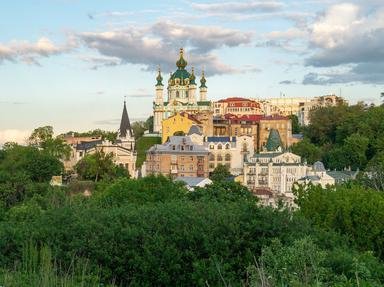Quiz Answer Key and Fun Facts
1. Scythians construct kurhany near the modern-day village of Kamianka
2. Cuman stone statues dot the area's landscape
3. Many villages in the region destroyed during the suppression of the Bulavin Uprising
4. Luhansk Oblast native Vasyl Zhuba participates in the Pugachev Uprising
5. Scottish industrialist Charles Gascoigne establishes his iron smelting factory in the city of Luhansk
6. Belgian inventor Ernest Solvay founds a soda plant in Lysychansk
7. Ukrainian activist Oleskii Alchevsky founds a metallurgical complex bearing his name
8. Most of the Oblast gets included in the "Polovtsian Land" subdivision of the Ukrainian People's Republic
9. Defeat of Otaman Ivan Kamenyuka and his resistance movements against both White and Red Army
10. The Holodomor devastates the Ukrainian lands, including Luhansk Oblast
11. The city of Luhansk gets its name back
12. 84% of Luhansk Oblast residents vote in favour of Ukrainian independence
13. Separatist elements hold a Congress in Sievierodonetsk
14. Russia-backed militants occupy the city of Luhansk and the southern raions of the Oblast
15. The shelling of Stanytsia Luhanska kindergarten serves as a prelude to the full-scale Russian invasion of Ukraine
Source: Author
DeepHistory
This quiz was reviewed by FunTrivia editor
ponycargirl before going online.
Any errors found in FunTrivia content are routinely corrected through our feedback system.
